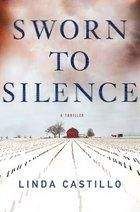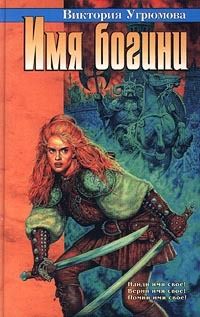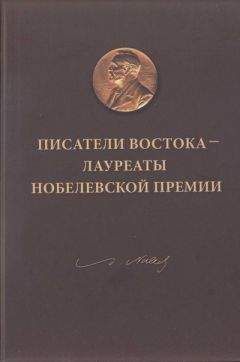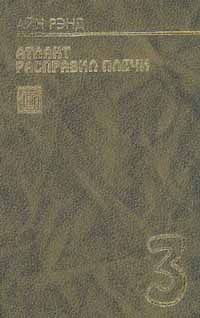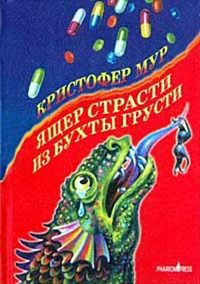A thought occurs to me. “Did anyone find her clothes?”
“Not a shred.”
“I think he’s keeping the clothes.”
“Why would he do that?”
“He’s keeping them as trophies.”
“That’s your area of expertise, not mine.”
“When will you do the autopsy?”
“First thing in the morning.”
I don’t want to wait that long, but it’s my desperation talking. People need to eat and sleep and go home to their families. “Will you give me a call? I’d like to be there.”
“Kate, I don’t know why you do that to yourself.”
I wonder if maybe it’s one of many ways I choose to punish myself. For what I did. For what I didn’t do. “See you in the morning.”
I end the call. Around me, dusk hovers low and gray. To my right, a group of plain children wearing traditional Amish garb—black coats and flat-brimmed hats for the boys, headscarves for the girls—play an impromptu game of ice hockey on a pond next to the road. For an instant, the scene sweeps me back to my own childhood. A time when I was never alone and had no concept of loneliness. My life was filled with family, worship, chores—and playtime every chance I got. Before the day Daniel Lapp introduced me to violence, I was a happy and well-adjusted Amish girl. My life was carefree and full of promise. Those simple days seem like a thousand lifetimes ago.
As I drive by the children, a deep ache of loneliness assails me. A longing for what is lost. My parents. My siblings. A part of myself I cannot reclaim. I wave to the kids. Their smiles bolster me. I glance in my rearview mirror as they resume their game, and a powerful need to protect them rises up inside me.
My sister Sarah and her husband live in the last house on a dead-end road. William has cleared the lane of snow, probably with his horse-drawn plow. He’s considered a conservative amongst the Amish community. While my brother Jacob uses a tractor, William adheres to traditional horsepower. More than once it has been a point of contention between the two men.
A neat row of blue spruce trees, their boughs laden with snow, runs alongside the lane. The massive barn stands two stories high. Built on a slope, it sits on an angled stone foundation. Half a dozen windows dot the façade. Four cupolas jut from the apex of the tin roof. No one knows for certain, but it’s rumored the house and barn date back two hundred years. A time when barns were the center of rural life and architectural works of art. My parents brought Sarah and Jacob and me here many times when we were kids. I chased chickens, played hide-and-seek and bottle-fed newborn calves. Once, on a dare, I jumped from a hay chute and sprained my ankle.
I park behind a sleigh, my headlights reflecting off the slow moving vehicle sign mounted at the rear. Beyond, the windows of the house glow yellow with lantern light. It’s a cozy and inviting scene. But as with my brother’s home, my welcome will not be warm.
I take the sidewalk to the front door and knock. I barely have time to gather my thoughts when the door swings open. I find myself looking at my older sister. “Katie.” She whispers my name as if it’s a bad word. Her gaze flicks sideways and I know William is inside. “Come in out of the cold.”
The aromas of cooked cabbage and baking yeast bread titillate my appetite as I enter. But I won’t be asked for dinner. A kerosene lamp illuminates the living room. I see a large homemade table and bench. On the opposite wall, a framed needlepoint sampler that had belonged to Mamm hangs front and center. The initials of our great-grandparents are sewn into the fabric next to locks of their hair. I remember running my fingers over those locks and wondering about the people they came from.
“Come into the kitchen,” Sarah says.
I follow her to the kitchen to find her husband at the table, hunched over a bowl of steaming soup.
“Hello, William,” I say.
He stands when I enter and bows his head slightly. “Good evening, Katie.”
“I’m sorry to interrupt your dinner.”
“You are welcome to hot soup.”
The invitation surprises me, since I’m under the bann, but I shake my head. “I’ve only got a few minutes.” I look at my sister and force a smile. “I wanted to check on you. See how you’re feeling.”
She places a hand over her distended abdomen, but her gaze slides from mine. “I feel good,” she says. “Better than last time.”
“You look great.”
William smiles. “She eats like a horse.”
“She ate us out of house and home when we were kids.” I smile, hoping it looks real. “It’s good for the baby.”
“Bad for my bulging middle!” she exclaims with a little too much enthusiasm.
An uncomfortable silence ensues. I touch her shoulder and make eye contact. “Are you still working on the baby quilt?”
“I’m almost finished.”
“Could I see it?”
My request surprises her, but her eyes light up. “Of course.” Touching my shoulder, she starts toward the living room. “Come.”
The stairs creak beneath our feet as we climb to the second level. I follow her to the bedroom she and William share. It’s a large room with two tall windows and an angled ceiling. The furniture is heavy and plain. A dresser that had once belonged to our parents. A chest with steel pulls. And a sleigh bed covered with one of Sarah’s quilts.
She crosses to the dresser and lights a glass lamp. Golden light casts shadows on the ceiling and walls. “You look tired, Katie.”
“I’ve been working a lot.”
Nodding, she pulls out a partially completed quilt. Curved patches of seafoam green and lavender form a complex pattern. I see the required seven stitches per inch and as always, I’m awed. Quilting is extremely labor intensive; a good quilt will contain over fifty thousand stitches. Most Amish women learn to sew early in life. Most can make a decent quilt. But very few ever become good enough to design a piece of art like this.
Thinking of the baby my sister carries, I touch the soft fabric. I think of the babies she’s lost in the past; I think of my own losses and for a moment I have to blink back tears. “It’s beautiful.”
“Yes.” Her smile is real this time. “It is lovely.”
I drop my hand and ask the question that’s been eating at me since Tomasetti waylaid me in the bar with his riddle about Pete the cop. “Sarah, have you told anyone about Daniel Lapp?”
She brushes a speck of thread off the quilt. “I do not wish to speak of that, Katie.”
“Did you tell someone about Lapp?”
Lowering the quilt, she stares at me as if I’ve just pulled out my pistol and shot her dead-center. “I did what I had to do.”
“What does that mean?”
“I prayed to God for guidance. When I woke yesterday morning, I knew I would find peace, that you would find peace, in the truth.”
A keen sense of betrayal cuts me. “Who did you tell?”
“I sent a note to Bishop Troyer.”
“What did the note say?”
“The truth.” She looks down at the quilt. “That you know who the killer is.” The words send a flood of panic through me. The scene at the bar with Tomasetti flashes in my mind’s eye. For an instant, I’m so stricken, I can’t catch my breath.
“I am sorry if this hurts you, Katie. But I felt very strongly that telling the truth was the right thing to do.”
“You don’t know the truth!” Turning away from her, I begin to pace. “Sarah, how could you?”
“Your police friends can help you find Daniel now,” she offered.
Heart pounding, I rub my hands over my face and try to calm down. “Did you sign the note? Do they know it came from you?”
“I did not sign my name.”
I try to think through the ramifications, but my brain is so muddled by exhaustion, I can’t think past the panic clenching my chest.
“Katie, what happened?”
I stop pacing and look at her. “Bishop Troyer took the note to the town council. Maybe the mayor. Now, they’re suspicious of me. Are you happy now?”
“I am not happy to see you hurting. All I want is for Daniel Lapp to be caught.”
“We don’t know that he’s the killer!” I shout.
She glances nervously toward the door. “Please do not shout.”
Trying hard to fend off the fingers of panic crawling all over me, I draw a deep breath. “Sarah, I need to talk to you about what happened that day.”
She starts to turn away, but I set my hands on her shoulders and force her to face me. “I need you to remember. Think back to that day. Is it really possible Daniel Lapp survived?”
“If he’s back, then he must have survived.” Her fingers flutter at the neckline of her plain dress. “You saw him, too.”
The human mind is a powerful thing. Like the body, it possesses protective mechanisms to safeguard it against trauma. The abject horror of what happened that day was branded into my brain and will remain there forever. But I remember few details of the rape, even less of the shooting. The one thing I do recall with vivid clarity is the blood. On the curtains. On my hands. An ocean of it glistening on the floor.
Too much blood for anyone to have survived.
“There was too much blood,” I whisper.
“What?”
I look hard at my sister. “Did you go with Datt and Jacob to the grain elevator?”
She stares back, her expression stricken. “No.”
“How do you know they buried the body?”
“I heard Mamm and Datt talking. In the barn. A few days after it happened.”
“What did they say?”
“Datt told Mamm he put Daniel in the hole where no one would ever find him.”
“In the hole?” My heart tap dances against my ribs. “What does that mean? What hole?”
“I do not know. A well, maybe. I did not ask.”
In the hole . . .
The words tumble in my head like sea glass in a kaleidoscope. “I have to go.” Sarah looks alarmed. “Where?”
“To find Daniel Lapp,” I say, and hit the stairs running.
CHAPTER 25
Following the chief of police on some half-baked hunch probably wasn’t a very good idea. With the temperature dropping fast and the snow coming down in earnest, John figured it fell into the downright stupid category. He was reaching for the ignition key when headlights cut through the darkness, telling him a vehicle was coming down the lane. “Shit,” he muttered.
He’d parked a dozen yards from the mouth of the lane, but he’d be lucky if she didn’t spot him. If she looked hard enough before turning onto the road, she’d see him. He might be a good liar, but he’d have one hell of a time explaining this. Leaning against the seat back, he watched the Explorer barrel down the driveway. It hit the road with enough speed to fishtail and then sped toward town.
Relieved, John started the engine, turned up the heat and put the Tahoe in gear. He wasn’t exactly sure why he was following her. Kate Burkholder hadn’t done anything wrong. Aside from not calling in the feds or the state for help, she was investigating the murders much the same way he would have had he been in her shoes.
It was the appearance of the mysterious note that had aroused his suspicions. Mayor Brock had delivered it just that morning. Had it come from anyone other than an Amish bishop, John might have written it off as a hoax. It was, after all, ludicrous to believe Kate knew the identity of the killer as the note had claimed.
But over the years John had learned to trust his gut. Right now it was telling him she was hiding something. Did she know the killer? Was he a relative? A lover? Was he Amish? Was she protecting him?
The questions gnawed at him as he followed her toward town. It was after nine P.M.; she was probably going to call it a night. That was fine by him. He could use a hot shower and some food. Not to mention a drink . . .
But Kate didn’t turn onto Main Street. Instead she headed south on the highway, a little too fast considering the road conditions. Curious, John fell back to a discreet distance and followed her into Coshocton County.
“Where the hell are you going?” He punched off the headlights as she turned onto a little-used road. Surprise rippled through him when she pulled into an abandoned grain facility. Intrigued, he watched the Explorer disappear behind the building. John parked a hundred yards away and shut down the engine.
“What are you up to, Kate?” he muttered.
The only answer he got was the tinkle of snow pellets against the windshield and the nagging insistence of his own suspicions.
I know coming here is a mistake. Chances are, I’ll dig until I’m exhausted, frostbitten and disheartened, and still not find what I’m looking for. In some twisted way, I want to believe proof of Daniel Lapp’s death will exonerate me for not telling anyone he could be a suspect in these murders.
Gathering the shovel, the pickax and my Mag-Lite, I enter the structure through the rear door. The place seems different now that I’m alone. The wind tears at the loose sheet metal outside and whistles through every crack, filling the place with the ghostly moans and groans of some Halloweenesque haunted house.
Cold nips at my face as I walk the length of the building. Though I was raised in farm country, I’ve always been foggy on the mechanical workings of the grain elevator. After that night with Jacob, however, I hit a couple of Web sites and learned the basics. Fifty years ago, trucks loaded with wheat or corn drove through the overhead door and onto the platform to be weighed. Once the truck was weighed, the driver pulled forward and dumped the load of grain into the “boot pit.” The empty vehicle was weighed again and the driver was paid per pound for the weight difference.
“So where the hell is the boot pit?” I say aloud.
The overhead door shudders with a gust of wind. I hear snow pinging against steel. Picking up the Mag-Lite, I shine it around the weigh platform. The boot pit grate should be nearby. I set down the flashlight and ram the tip of the shovel into the ground where I think the truck drive-through aisle might have been—and a hollow thud sounds.
Using the shovel like an oar, I scrape away dry earth and spot a rotting piece of plywood. Dropping to my knees, I use my hands and tear at the ground like a crazy woman. I hear gasping sounds echoing off the walls. It scares me when I realize those sounds are coming from me. Unearthing the plywood, I drag it aside. Hope leaps through me when I see the rusty grate. The boot pit is about eight feet square and twelve feet deep. The elevator leg has long since been removed, but the hole was never filled. Grabbing the flashlight, I shine the beam into the pit. I see chunks of broken concrete, loose dirt, gravel and a pile of broken boards.
I use the shovel to pry at the grate, but the heavy piece of steel doesn’t budge. I keep a cable in my vehicle during the winter months and use it for hauling stranded cars out of snow. It strikes me that I can use it to move the grate. Grabbing my keys, I run to the Explorer and back it up to the grate. When the vehicle is in position, I snatch up the cable and secure the hooked end to the Explorer’s undercarriage. I clip the other end to the grate. Sliding behind the wheel, I jam the Explorer into four-wheel drive and give it gas. The cable goes taut. The engine revs. The tires spin and grab. Steel screeches against steel as the grate is pulled from its ancient nest.
